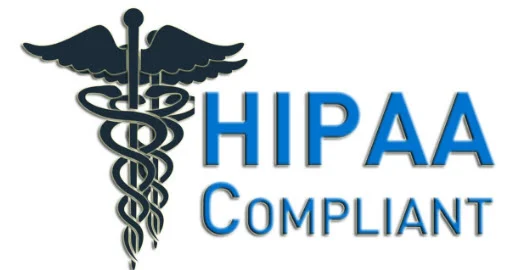The Health Insurance Portability and Accountability Act (HIPAA) is a cornerstone of healthcare privacy and security. For organizations handling sensitive health information, ensuring compliance isn’t just a legal necessity; it’s an ethical obligation. Establishing and maintaining a HIPAA-compliant workflow is essential for safeguarding patient data, streamlining operations, and building trust with stakeholders.
In this blog, we’ll explore the key steps to creating a HIPAA-compliant workflow and highlight tools and services like HIPAA-compliant print and mail and direct mail marketing services that help businesses stay compliant while maintaining operational efficiency.
Understanding HIPAA Compliance
HIPAA sets standards for protecting sensitive patient information, ensuring that healthcare organizations and their associates implement appropriate measures to secure data. Non-compliance can result in steep fines, reputational damage, and loss of trust.
Key components of HIPAA compliance include:
- Privacy Rule: Establishes standards for protecting patient information and giving individuals control over their health data.
- Security Rule: Focuses on protecting electronic protected health information (ePHI) with administrative, physical, and technical safeguards.
- Breach Notification Rule: Mandates timely notification to affected individuals, the Department of Health and Human Services (HHS), and sometimes the media in the event of a breach.
Building a HIPAA-Compliant Workflow
1. Conduct Risk Assessments
A HIPAA-compliant workflow begins with a thorough risk assessment. Evaluate how patient data flows through your organization, identify potential vulnerabilities, and implement corrective measures.
Regular risk assessments ensure that your organization adapts to evolving threats and maintains a secure environment for sensitive information.
2. Secure Data Handling
Ensure that patient data is only accessible to authorized personnel. Use role-based access controls and implement encryption for data at rest and in transit. For physical records, establish secure storage protocols and restricted access to areas where sensitive information is stored.
Services like hipaa compliant print and mail can help manage sensitive data securely during document printing and mailing processes. By outsourcing these tasks to trusted vendors, healthcare organizations can ensure that data is handled with care and in compliance with HIPAA guidelines.
3. Train Your Workforce
Employees are often the weakest link in data security. Comprehensive training programs can educate your team about HIPAA regulations, data handling best practices, and recognizing potential security threats.
Ensure that your workforce understands their responsibilities and the consequences of non-compliance. Regular refresher courses can keep the knowledge up to date.
4. Use Secure Technology
Technology plays a pivotal role in maintaining a HIPAA-compliant workflow. Implement secure communication tools, encrypted email services, and reliable software for managing ePHI.
For example, integrating a direct mail marketing service into your outreach strategy can streamline patient communication while ensuring data security. These platforms provide automated, secure processes for sending reminders, invoices, and marketing materials.
5. Establish Policies and Procedures
Create comprehensive policies and procedures for handling ePHI. These should cover:
- Data access protocols
- Incident response plans
- Record retention and disposal policies
- Vendor management practices
Your policies should align with HIPAA requirements and be regularly reviewed and updated.
6. Monitor and Audit
Regular audits and monitoring help identify potential compliance gaps. Automated monitoring tools can track access logs, detect suspicious activities, and flag potential breaches.
Ensure that your organization maintains detailed documentation of compliance efforts. This not only helps during audits but also demonstrates a commitment to HIPAA standards.
HIPAA-Compliant Print and Mail Solutions
Outsourcing tasks like statement printing and mailing can be a challenge when HIPAA compliance is a concern. However, using a HIPAA-compliant print and mail service ensures that these operations meet stringent security standards.
Such services provide:
- Data Encryption: Securing sensitive information during transfer and processing.
- Audit Trails: Comprehensive logs of all activities for compliance verification.
- Physical Security: Secure facilities for printing and mailing.
- Customization: Tailored solutions for healthcare providers, including appointment reminders, patient statements, and billing notifications.
By partnering with a trusted vendor, healthcare organizations can focus on their core operations while ensuring compliance with HIPAA regulations.
Leveraging Direct Mail Marketing Services in Healthcare
Direct mail remains a powerful tool for patient engagement and marketing in the healthcare industry. With a direct mail marketing service, organizations can efficiently reach their audience while staying HIPAA-compliant.
Benefits of direct mail marketing for healthcare include:
- Targeted Communication: Send personalized messages, such as wellness tips or appointment reminders, to specific patient segments.
- Higher Engagement Rates: Physical mail often captures more attention than digital alternatives.
- Data Security: A reliable service ensures that sensitive information is handled securely, meeting HIPAA standards.
Automation capabilities further streamline the process, saving time and reducing the risk of errors.
Ensuring Vendor Compliance
When outsourcing tasks, it’s crucial to ensure that your vendors are HIPAA-compliant. Here’s what to look for:
- Business Associate Agreements (BAA): Ensure that your vendors sign a BAA, outlining their responsibilities for safeguarding ePHI.
- Certifications and Audits: Verify that the vendor undergoes regular audits and meets industry standards for data security.
- Transparent Processes: Look for vendors that provide detailed documentation of their workflows and security measures.
By choosing partners like HIPAA compliant print and mail and direct mail marketing services, you can be confident in their ability to protect patient data and comply with HIPAA regulations.
Common Pitfalls to Avoid
- Neglecting Updates: HIPAA regulations and security threats evolve. Failing to update policies, training, or technology can lead to compliance issues.
- Overlooking Small Breaches: Even minor breaches require thorough investigation and reporting. Ignoring them can result in significant penalties.
- Poor Communication: Ensure that your team understands their roles in maintaining compliance. Miscommunication can lead to costly mistakes.
Conclusion
Establishing and maintaining a HIPAA-compliant workflow requires a proactive approach, continuous improvement, and the right partners. By implementing best practices and leveraging services like HIPAA compliant print and mail and direct mail marketing services, healthcare organizations can protect sensitive data, enhance patient trust, and ensure regulatory compliance.
Investing in compliance today not only safeguards your organization but also positions it for long-term success in the ever-evolving healthcare landscape.
Stay in touch to get more news & updates on Gossips.Blog!




